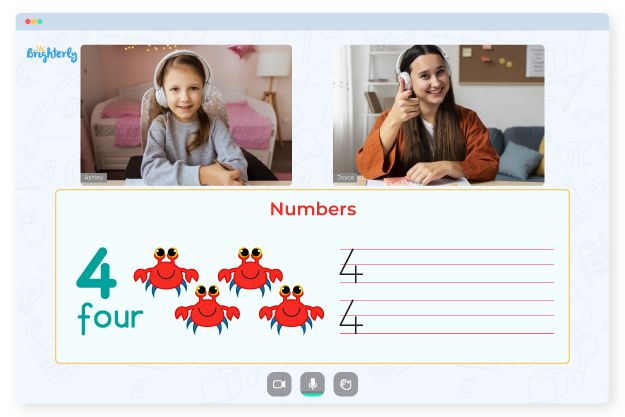Product in Math – Definition With Examples
Updated on January 1, 2024
Welcome to Brighterly’s one-of-a-kind math blog designed especially for children! Today, we’ll uncover the fascinating world of Product in Math. This fundamental topic is crucial for kids who aspire to excel in their math skills. At Brighterly, we pride ourselves on offering the math worksheets for kids, ensuring that learning remains a fun and captivating experience. So, without further ado, let’s dive headfirst into the exciting realm of multiplication and unravel the mysteries of the product in math!
What is Product in Math?
The product is a key concept in the fascinating world of mathematics. It refers to the outcome obtained by multiplying two or more numbers together. In simpler terms, it is the result of a multiplication operation. For instance, when we multiply 3 by 4 (3 x 4), the product is 12. The product plays a significant role in mathematics, as it serves as the foundation for numerous other mathematical operations and equations.
How to Find the Product?
Discovering the product of two or more numbers requires performing a multiplication operation. To help you master this essential skill, we’ve prepared a detailed step-by-step guide on multiplying two numbers:
- Position the first number (referred to as the multiplier) above the second number (known as the multiplicand).
- Begin the multiplication process by multiplying each digit of the multiplicand by the multiplier, starting from the rightmost digit.
- As you progress through the multiplication, write down the partial products for each multiplication. Make sure to align them according to their place value.
- Finally, add the partial products together to arrive at the final product.
By following these simple steps, you’ll be well-equipped to tackle multiplication problems and find the product with ease and confidence.
Multiplier, Multiplicand, and Product
In a multiplication operation, there are three important terms:
- Multiplier: The number you are multiplying.
- Multiplicand: The number being multiplied by the multiplier.
- Product: The result of the multiplication operation.
For example, in the multiplication operation 3 x 4 = 12, 3 is the multiplier, 4 is the multiplicand, and 12 is the product.
Commutative Property of Product
The commutative property of product states that the order in which you multiply numbers does not affect the product. In other words, the product remains the same even if you switch the order of the multiplier and the multiplicand. For example, 3 x 4 = 4 x 3, since both equal 12.
Product of Fractions and Decimals
Multiplying fractions and decimals may seem intimidating, but it’s actually quite simple. Let’s break it down into two separate sections: product of fractions and product of decimals.
Product of Fractions
To multiply fractions, follow these steps:
- Multiply the numerators (top numbers) to get the new numerator.
- Multiply the denominators (bottom numbers) to get the new denominator.
- Simplify the resulting fraction if necessary.
For example, to multiply 2/3 by 3/4, multiply the numerators (2 x 3 = 6) and the denominators (3 x 4 = 12) to get the product 6/12. Simplify the fraction to get the final product of 1/2.
Product of Decimals
To multiply decimals, follow these steps:
- Ignore the decimal points and multiply the numbers as if they were whole numbers.
- Count the total number of decimal places in both numbers.
- Place the decimal point in the product so that the number of decimal places is equal to the total counted in step 2.
For example, to multiply 0.2 by 0.3, first multiply the numbers as if they were whole numbers (2 x 3 = 6). Since both numbers have one decimal place, the product should also have one decimal place. So, the final product is 0.06.
Solved Examples
Let’s take a look at some solved examples to better understand the concept of product in math:
-
Find the product of 7 and 6.
7 x 6 = 42
So, the product of 7 and 6 is 42.
-
Find the product of 2/5 and 3/4.
To multiply the fractions, multiply the numerators (2 x 3 = 6) and the denominators (5 x 4 = 20) to get the product 6/20. Simplify the fraction to get the final product of 3/10.
-
Find the product of 0.25 and 0.4.
First, multiply the numbers as if they were whole numbers (25 x 4 = 100). Since both numbers have two decimal places, the product should also have four decimal places. So, the final product is 0.1000, which can be simplified to 0.1.
Practice Problems
Now that you’ve seen some examples, try solving these practice problems to test your understanding of the product in math:
- Find the product of 8 and 9.
- Find the product of 3/7 and 2/3.
- Find the product of 0.05 and 0.2.
Remember that Brighterly has the best math worksheets for kids to help you practice and master the concept of the product in math. So, keep practicing and have fun with math!
Conclusion
In conclusion, the product is a vital element in mathematics, representing the outcome of multiplying two or more numbers together. This indispensable concept lays a robust foundation for a plethora of other mathematical operations and equations. At Brighterly, we firmly believe that understanding the product of whole numbers, fractions, and decimals is paramount for nurturing and developing strong math skills.
By mastering the product in math, students will be well-equipped to tackle more complex mathematical challenges with ease and confidence. At Brighterly, our commitment to providing exceptional learning resources, such as our top-notch math worksheets for kids, enables students to enjoy a fun and engaging learning journey. We encourage you to keep practicing, refining your skills, and embracing the fascinating world of mathematics with Brighterly by your side!
Frequently Asked Questions on Product in Math
What is the product in math?
The product is the result of multiplying two or more numbers together. It’s the outcome of a multiplication operation.
What is the commutative property of product?
The commutative property of product states that the order in which you multiply numbers does not affect the product. In other words, the product remains the same even if you switch the order of the multiplier and the multiplicand.
How do you find the product of fractions?
To multiply fractions, multiply the numerators to get the new numerator and multiply the denominators to get the new denominator. Simplify the resulting fraction if necessary.
How do you find the product of decimals?
To multiply decimals, ignore the decimal points and multiply the numbers as if they were whole numbers. Count the total number of decimal places in both numbers and place the decimal point in the product so that the number of decimal places is equal to the total counted.




